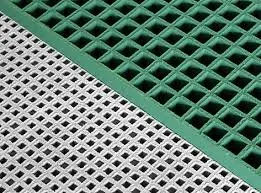
-
 Afrikaans
Afrikaans -
 Albanian
Albanian -
 Amharic
Amharic -
 Arabic
Arabic -
 Armenian
Armenian -
 Azerbaijani
Azerbaijani -
 Basque
Basque -
 Belarusian
Belarusian -
 Bengali
Bengali -
 Bosnian
Bosnian -
 Bulgarian
Bulgarian -
 Catalan
Catalan -
 Cebuano
Cebuano -
 China
China -
 China (Taiwan)
China (Taiwan) -
 Corsican
Corsican -
 Croatian
Croatian -
 Czech
Czech -
 Danish
Danish -
 Dutch
Dutch -
 English
English -
 Esperanto
Esperanto -
 Estonian
Estonian -
 Finnish
Finnish -
 French
French -
 Frisian
Frisian -
 Galician
Galician -
 Georgian
Georgian -
 German
German -
 Greek
Greek -
 Gujarati
Gujarati -
 Haitian Creole
Haitian Creole -
 hausa
hausa -
 hawaiian
hawaiian -
 Hebrew
Hebrew -
 Hindi
Hindi -
 Miao
Miao -
 Hungarian
Hungarian -
 Icelandic
Icelandic -
 igbo
igbo -
 Indonesian
Indonesian -
 irish
irish -
 Italian
Italian -
 Japanese
Japanese -
 Javanese
Javanese -
 Kannada
Kannada -
 kazakh
kazakh -
 Khmer
Khmer -
 Rwandese
Rwandese -
 Korean
Korean -
 Kurdish
Kurdish -
 Kyrgyz
Kyrgyz -
 Lao
Lao -
 Latin
Latin -
 Latvian
Latvian -
 Lithuanian
Lithuanian -
 Luxembourgish
Luxembourgish -
 Macedonian
Macedonian -
 Malgashi
Malgashi -
 Malay
Malay -
 Malayalam
Malayalam -
 Maltese
Maltese -
 Maori
Maori -
 Marathi
Marathi -
 Mongolian
Mongolian -
 Myanmar
Myanmar -
 Nepali
Nepali -
 Norwegian
Norwegian -
 Norwegian
Norwegian -
 Occitan
Occitan -
 Pashto
Pashto -
 Persian
Persian -
 Polish
Polish -
 Portuguese
Portuguese -
 Punjabi
Punjabi -
 Romanian
Romanian -
 Russian
Russian -
 Samoan
Samoan -
 Scottish Gaelic
Scottish Gaelic -
 Serbian
Serbian -
 Sesotho
Sesotho -
 Shona
Shona -
 Sindhi
Sindhi -
 Sinhala
Sinhala -
 Slovak
Slovak -
 Slovenian
Slovenian -
 Somali
Somali -
 Spanish
Spanish -
 Sundanese
Sundanese -
 Swahili
Swahili -
 Swedish
Swedish -
 Tagalog
Tagalog -
 Tajik
Tajik -
 Tamil
Tamil -
 Tatar
Tatar -
 Telugu
Telugu -
 Thai
Thai -
 Turkish
Turkish -
 Turkmen
Turkmen -
 Ukrainian
Ukrainian -
 Urdu
Urdu -
 Uighur
Uighur -
 Uzbek
Uzbek -
 Vietnamese
Vietnamese -
 Welsh
Welsh -
 Bantu
Bantu -
 Yiddish
Yiddish -
 Yoruba
Yoruba -
 Zulu
Zulu
frp chimney construction and installation for industrial and
FRP Chimney Construction and Installation for Industrial Applications
Fiber Reinforced Plastic (FRP) chimneys have gained significant attention in industrial settings due to their exceptional durability, lightweight properties, and resistance to corrosive environments. These attributes make FRP chimneys an ideal choice for various applications, ranging from power plants to chemical manufacturing facilities.
The construction of FRP chimneys begins with the careful selection of materials. FRP is composed of a polymer matrix reinforced with fiberglass, which significantly enhances its tensile strength and resistance to environmental degradation. This material is particularly advantageous in industries where emissions can contain corrosive agents such as sulfuric acid or chlorine.
Installation of FRP chimneys involves several critical steps to ensure structural integrity and compliance with safety standards. First, site assessment is conducted to determine the optimal location and specifications for the chimney. This assessment considers factors such as wind loads, seismic activity, and the flue gas characteristics, which play a crucial role in the design and construction process.
frp chimney construction and installation for industrial and

Once the design parameters are established, the manufacturing of FRP components can commence. These components are typically fabricated in sections to facilitate easy transport and assembly at the installation site. Advanced techniques such as filament winding and pultrusion are commonly employed, ensuring uniformity and precision in each section.
Following fabrication, the assembly of the chimney involves carefully joining the sections using specialized adhesives and mechanical fasteners. This process requires skilled labor to ensure that the joints are secure and that the chimney meets the required height and diameter specifications. It is essential to address thermal expansion considerations during installation, as FRP materials can expand and contract with temperature changes.
Post-installation, thorough inspections and testing are conducted to verify the chimney's performance and integrity. This includes checking for structural stability, proper sealing, and resistance to the specific chemicals present in the flue gases. Regular maintenance is also essential to prolong the lifespan of FRP chimneys, ensuring they remain efficient in emissions dispersal and operation.
In conclusion, FRP chimneys represent a modern solution for industrial applications, offering numerous benefits over traditional materials. Through careful construction and installation, these structures can provide reliable and long-lasting service in harsh environments, thus supporting industries in their commitment to sustainability and efficiency.









